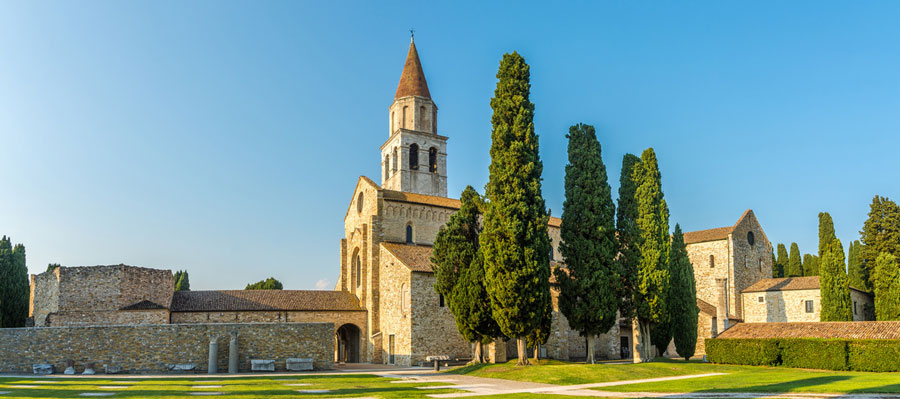THE 10 WONDERS
2 - Aquileia
Aquileia
Aquileia was one of the largest and most cosmopolitan cities of the early Roman Empire. Founded in 181 BCE it became the capital of the X (tenth) Augustan Region and swelled to 100,000 inhabitants at the time of its greatest demographic expansion. It was the main commercial and military hub between Italy and eastern provinces. We can admire the remains of the forum and the streets that opened onto it, the docks of its river port, and the traces of many villas. Much of the ancient city is still buried, a real treasure that remains to be discovered. Already by the 4th century it had become the centre of evangelization in Central Europe.
The mosaic floors of the Theodorian Basilica remain from the early Christian period and are considered extremely precious for the exceptional state of their preservation and for the variety of the biblical symbols they employ. The city was destroyed by Attila in 452 CE and the flight of its inhabitants into the lagoon led to the birth of Venice. Charlemagne redesigned its borders with the Archbishop Principality of Salzburg. In 1031 CE a phase of profound restoration began to be undertaken, commissioned by the Patriarch Popone, who also had the bell tower constructed, which was later taken as an example during the construction of many Friulan and Istrian churches. Aquileia was declared a World Heritage Site by UNESCO in 1998.
Info: www.prolocoaquileia.it


